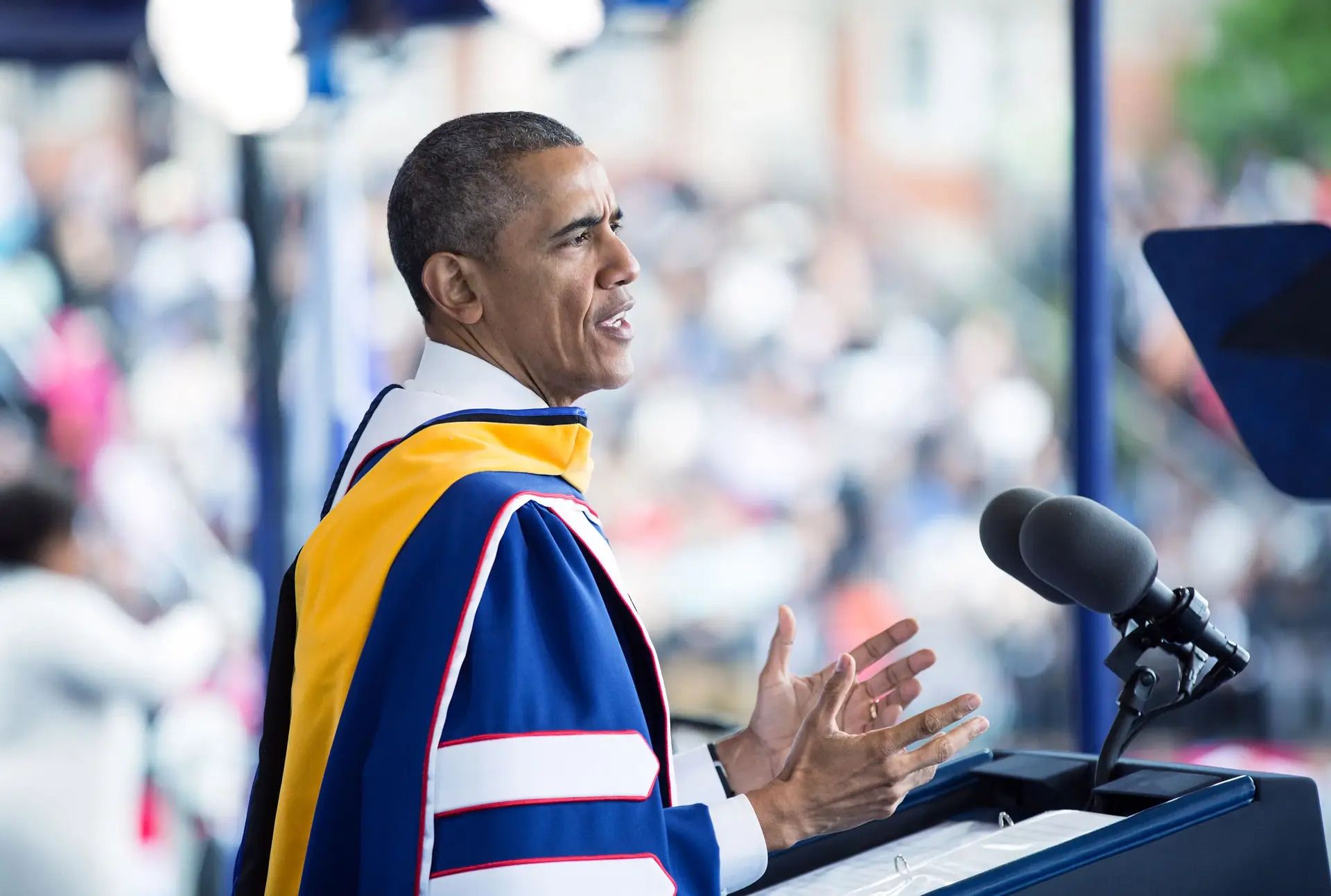- Doomsday Scenario
- Posts
- Three Reasons I Still Have Hope for America
Three Reasons I Still Have Hope for America
This weekend's "No Kings" rallies stand as an important corrective amid a dark moment
Welcome to Doomsday Scenario, my regular column on national security, geopolitics, history, and—unfortunately—the fight for democracy in the Trump era. I hope if you’re coming to this online, you’ll consider subscribing right here. It’s easy—and free:
Saturday’s national “No Kings” protests seem likely to be huge, and the Trump administration appears especially concerned and worried about the public backlash it’s facing this weekend. House Speaker Mike Johnson is railing against as them as a “hate America rally,” while Treasury Secretary Scott Bessent bloviated this week, “No kings equals no paychecks,” a message so dumb, out-of-touch, and wrong that it almost sounds like a tweet from Chuck Schumer’s social media team. Even Transportation Secretary Sean Duffy got into the complaining-in-advance act, which for me only underscored that the inner circle of would-be King Donald’s administration is legitimately concerned about a real on-the-ground resistance movement. “The GOP’s desperation meter is at DEFCON 1,” Jill Lawrence wrote.
To me — as someone who cares deeply about the future of American democracy — the rallies stand as an important expression of love for the United States and the idea and dream that the US has represented for 250 years.
I’ve written over the last three months about how the United States has tipped into authoritarianism — we’ve crossed an invisible line never crossed before in our history — but that slide is not necessarily permanent nor irreversible, and I hope that this weekend’s “No Kings” protests will someday be looked back upon as a turning point when the public anger’s and resistance to fascism began to boil.
Last month, at the Author’s Guild literary festival in the Berkshires, an audience member asked me a question I at first stumbled to answer: What are my reasons for hope in this time? I will admit that they are few and far between right now. However, there are three significant reservoirs of hope for me:
1. People — There are more of us than there are of them.
It’s easy to lose sight of how weak this administration’s popular support actually is. Two-thirds of Americans are not Trump voters — and even many who did support him are beginning to question or turn against what it’s like to live in Donald Trump’s America.
Many days it seems like Trump is on an unstoppable roll; he’s not. He is historically unpopular. The percent of Americans saying the country is on “the wrong track” has hit a new high. The increasingly unhinged Republican taking points are losing the public opinion battle in the government shutdown. Democrats are overperforming in countless contests this year and are looking strong in the Virginia and New Jersey gubernatorial races for next month. ABC had to cave on letting Jimmy Kimmel come back to the air. Many of Trump’s actions are getting turned back by the courts; even Harvard has gotten most of its federal funding back. Democratic governors and states are having success turning back some of Trump’s excesses and organizing around the federal government. And the costume-heavy protests outside ICE facilities in Oregon, Chicago, and elsewhere are helping to display the absurdity of the administration’s attempted crackdowns.
More of “Official America” would do well to recognize that Trump’s actions stem more from weakness than strength. As G. Elliott Morris, one of the only prognosticators of public opinion I bother to listen to anymore, argues, “A lot of powerful people just don’t realize how unpopular Trump is.” Greg Sargent wrote yesterday, “ICE's military raids and masked kidnappings are resonating deeply/negatively in the cultural spaces we keep hearing Dems need to reach: Manosphere, Joe Rogan, country music, disengaged voters. That’s rare and it gives Dems a big opening to engage.”
Donald Trump, Stephen Miller, and the other corrupt cronies and would-be fascists of this administration are in many ways racing the clock. As Paul Krugman wrote last month, “Trump is nakedly following the playbook of autocrats like Vladimir Putin and Viktor Orban. As his poll numbers fall, he is rushing to lock in permanent power by punishing his opponents and intimidating everyone else into submission… Yet Trump has a significant problem that neither Putin nor Orban faced. When Putin and Orban were consolidating their autocracies, they were genuinely popular. They were perceived by the public as effective and competent leaders. Just nine months into his presidency, Trump, by contrast, is deeply unpopular. He is increasingly seen as chaotic and inept.”
How and where and when to organize and capitalize on this unrest and dissatisfaction remains an open question — and there’s plenty of reason to question whether the undynamic duo of Chuck Schumer and Hakeem Jeffries can get there — but I do have hope when I walk into bookstores and see people buying Timothy Snyder and Anne Applebaum, when I see anti-ICE posters going up in schools and businesses, and when I see the preparations for this weekend’s rallies like this:

2. History — America’s progress has always been imperfect.
Ironically, the second pillar of hope I have is that the history of the United States is filled with dark chapters — sometimes, even long dark chapters.
We are a country founded on a deeply imperfect premise, “all men are created equal,” that at that time excluded enslaved Blacks, women, indigenous people, and even white men who didn’t own property. America has many stories and the one that I choose to believe is the one where we are a country that strives, generation by generation, decade by decade, to be better. That viewed across 250 years, America is a country where each generation has strived to hand off a country more just, equal, and prosperous than the one they inherited from their parents and grandparents.
That doesn’t mean that progress has been linear, steady, easy, or automatic; progress requires hard efforts, protests, organizing, and sacrifice. The period after the Civil War was filled with hope and new-found freedoms for enslaved Blacks in the South, but many of those advances were rolled back — sometimes violently so — and it took 100 years to even begin to deliver on the promise of Reconstruction. In too many places, we still haven’t gotten there.
Many of today’s worst episodes are, in fact, echoes of previous dark chapters. Today’s “Kavanaugh Raids” echo the “Palmer Raids” of a century ago. ICE is setting up detention facilities on the sites that used to house Japanese-American detainees. Trump’s own scandals today, from the illegal bombing of Venezuelan boats to weaponizing the Justice Department and IRS against his enemies, closely mirror many aspects of Watergate.
As I said in a commencement address at Champlain College in 2022, “America is not and never has been a perfect country. We have had shameful chapters of our national history — we have not always lived up to our best ideals. But loving America isn’t about saying that we’re always right. And loving America doesn’t require burying or turning away from awful chapters in our history — whether that’s slavery, our government’s treatment of indigenous people, Jim Crow, or our internment of Japanese-Americans in World War II. Recognizing all of that doesn’t mean we don’t love our country. Loving America is about saying that we, each of us and all of us, can be better.”
Today may be dark, but the story of America for 250 years is that — with hard work by good people — tomorrow there is hope it will be better.

Obama speaking at Howard in 2016 (White House Photo by Pete Souza)
As soon-to-be former President Obama told Howard University in 2016: “If you had to choose one moment in history in which you could be born, and you didn’t know ahead of time who you were going to be–what nationality, what gender, what race, whether you’d be rich or poor, gay or straight, what faith you’d be born into–you wouldn’t choose 100 years ago. You wouldn’t choose the fifties, or the sixties, or the seventies. You’d choose right now.”
The great thing is that for America that’s effectively always been true.
Yes, this is a particularly hard argument to bear the same week that the conservative Supreme Court threw “racist spaghetti” at the Voting Rights Act, an incredibly important piece of the foundation of our multiracial democracy that John Roberts has been angling to kill for decades.
And I do want to be clear about one very big caveat in this optimism: In the darkest chapters of American history before, we’ve never seen the collapse of constitutional checks and balances that we’re experiencing — as I’ve argued and reargued this year, we’re living through not a “constitutional crisis” but a “constitutional crash,” the flat-lining of our normal functioning government. The total abdication of congress’s powers by Speaker Mike Johnson and Senate leader John Thune and the total departure from settled law and precedent that Chief Justice John Roberts seems eager to embrace to further Trump’s king-like powers is unprecedented in American history.
Obama’s mantra actually falls short now — for many groups and parts of America, if you had to choose any moment to be an American, you’d choose not right now but a moment pre-2020, when rights for women, minorities, and LGBTQ people were available nationally and protected, where public health efforts were supported and agreed-upon policy, and the federal government functioned better. The Baby Boomers have done much to break the social contract of handing off a country better than the one before — income inequality has risen dramatically and education, health care, housing, and the basic resilience of a middle-class life feel increasingly out-of-the-realm-of-the-possible for too many young and working-age Americans. That departure from the norm is a notable tragedy, but if we combine the political reality of #1 with the mission and promise and lessons of #2, there’s still hope for me that, with work, we can continue to carry forward the dream of a better country.
Which brings me to my third pillar of hope:
3. Actuarial — Trump won’t last forever, which means “Trumpism” will fall.
Trump may want to be a dictator and emulate Franco and Orban, and — who knows — maybe the ridiculous White House ballroom he’s building is an indication he doesn’t plan to leave peacefully on January 20, 2029, but time tells us that he’s never going to be Franco, the dictator who reigned in Spain from 1939 until 1975. The reality is Donald Trump is 79 and not well — and probably less well than the media is willing to dig into — and his reign as president and America’s would-be king will be measured in years, not decades.
Whenever and however Donald Trump exits the stage, there just isn’t anyone who will step into the MAGA movement’s shoes — there are plenty of people who will try, from JD Vance to Marco Rubio to Ron DeSantis to Don Jr. to Ted Cruz, but the thing we’ve seen over and over across the last decade is that no one is Donald Trump. Vice President JD Vance, an incredibly awkward and unfunny Trump-lite who is widely despised by both sides, is most certainly not Donald Trump.
Trump has built in MAGA not a movement but a personality cult — a fragile coalition of anti-government extremists, white nationalists, conspiracists, disaffected people hurt by globalization, and a lot of low-information voters whose brains have been fried by right-wing media and social media algorithms.
Post-Trump, the MAGA cult will likely splinter and fracture into bitter power-hungry factions, many of which will be terrified about their own culpability to criminal, civil, or other public accountability. That fragile coalition is unlikely to survive months past Trump himself — and if and when that collapse happens, the reality of #1 (“there are more of us than of them”), powered by the history and mission of #2 (“the dream of America is a country that gets more just and more free”), will have an important opening and opportunity.

The June “No Kings” protests in Los Angeles. (Photo by DAVID PASHAEE/Middle East Images/AFP via Getty Images)
If civil society and good people, like the millions who will march this weekend at the No Kings protests, can stay strong, vocal, and active in the months and years ahead, there’s plenty of reason to believe that the United States — or at least parts of the United States — can begin to repair the damage done by Trumpism and continue to advance our national, collective 250-year-old dream of a multiracial democracy more just, more equal, and more free.
The damage that Trump has already done to our government, our institutions, and our civic national fabric will be real and lasting. We will never be the country we were before Donald Trump corruptly won the election in 2016 with Russia’s help, but someday — across years and decades, and maybe not even during my lifetime but perhaps during my childrens’ lifetime — we can strive to work together to ensure that the country we hand off to future generations is better than the one we’ve inherited.
Yes, there are lots of reasons to believe this moment is different — that the GOP is fundamentally committed to a white nationalist authoritarian vision for America unlike any party in power in history and that they’re willing to wreck our country to achieve that — but I know I will be heartened by the images that will emerge tomorrow in cities and towns big and small all across our country that the country that I’ve believed in for my entire life isn’t gone yet.
Yes, there are lots of reasons to fear what will happen in the 2026 and 2028 elections and how Republicans will try to lock in permanent illegitimate minority power, but there’s also plenty of reasons to believe that through organizing, protest, and — most of all — voting, we can wrest control back.
Democracy and progress is not foreordained or guaranteed — but it wasn’t for previous generations either.
For me, amid much darkness day-to-day, hope lives.
GMG
PS: If you’ve found this useful, I hope you’ll consider subscribing and sharing this newsletter with a few friends: